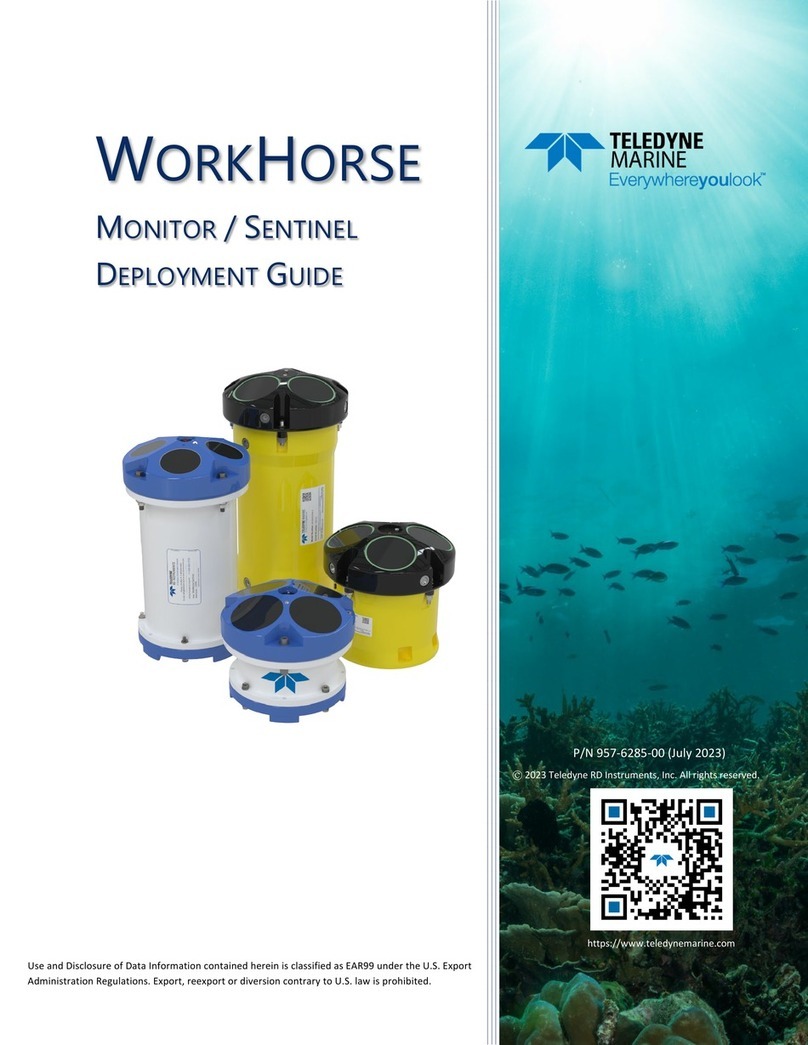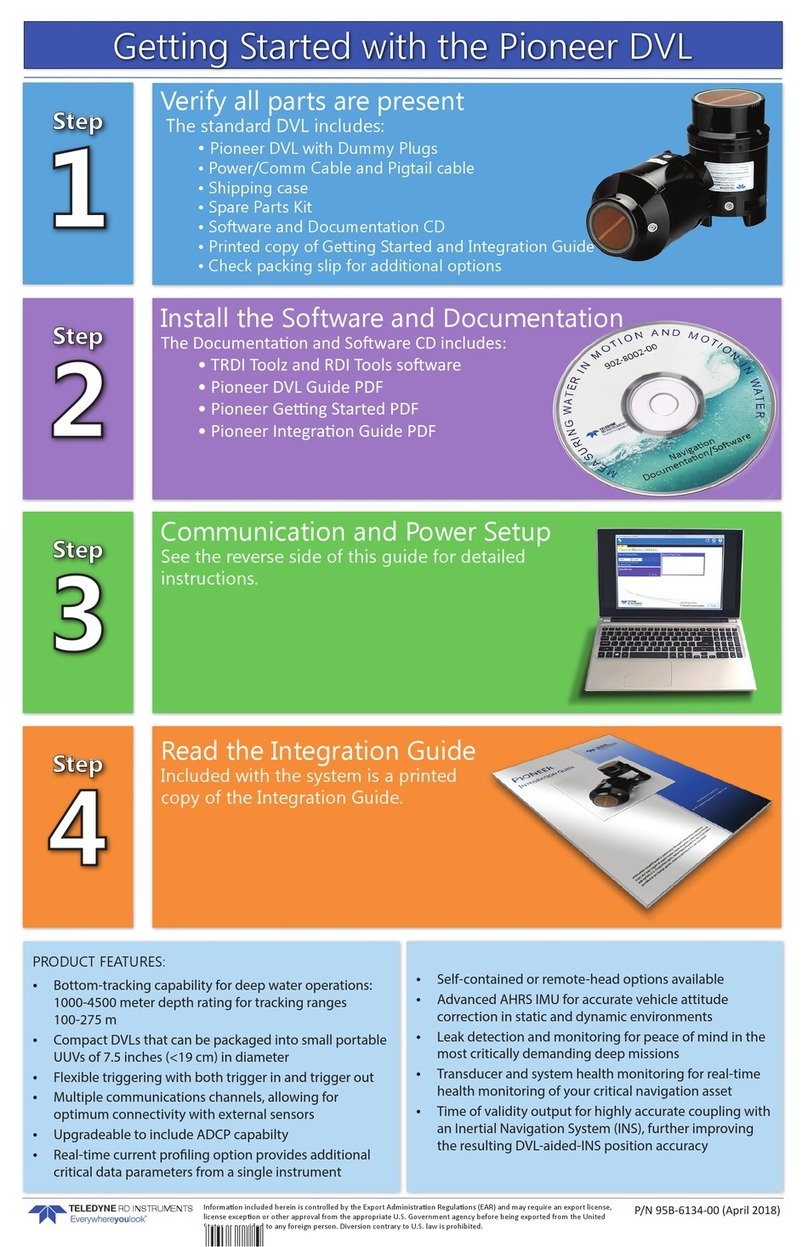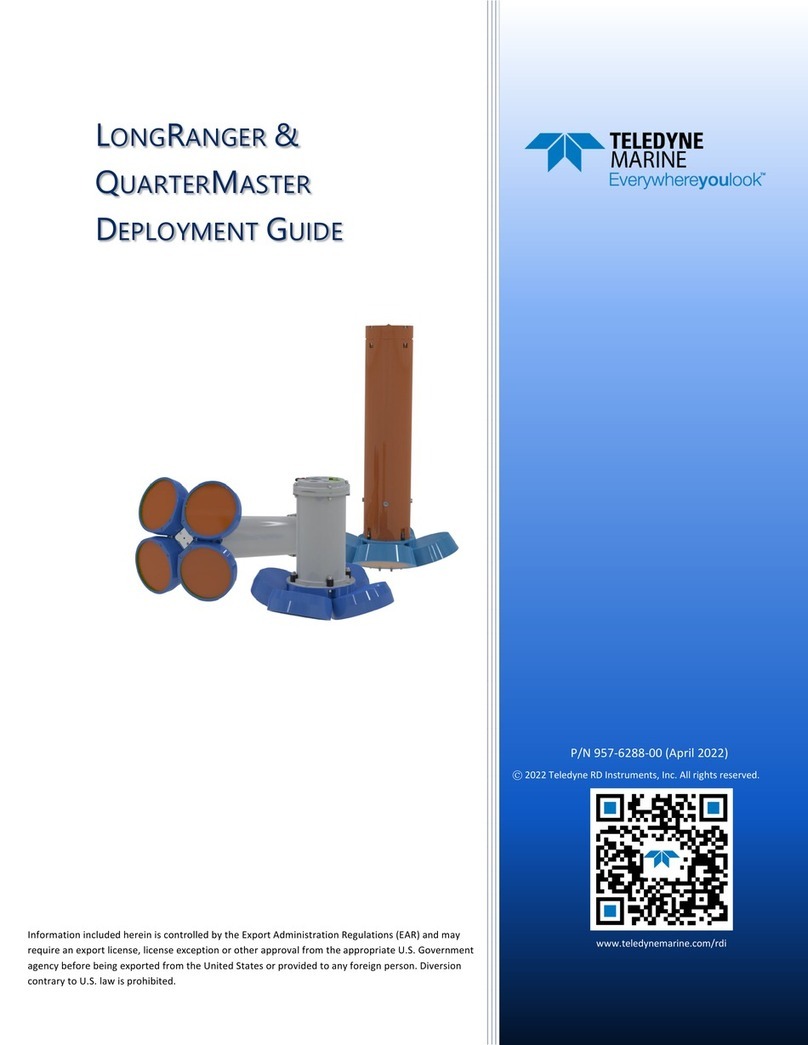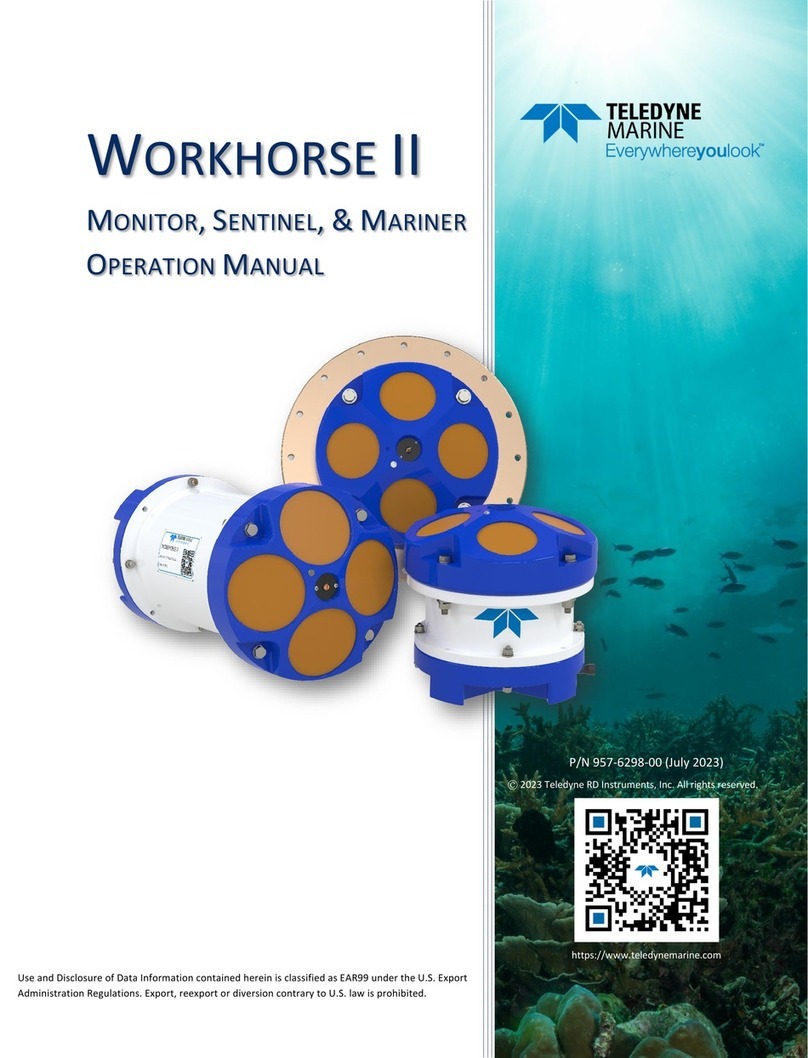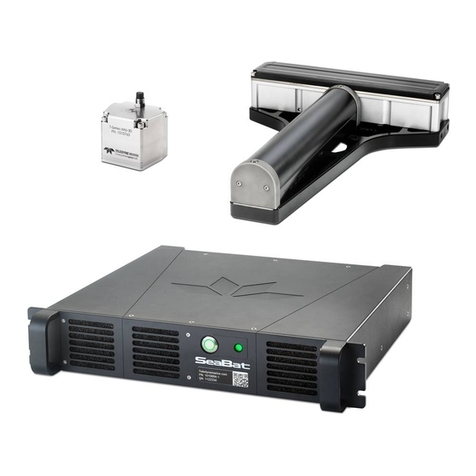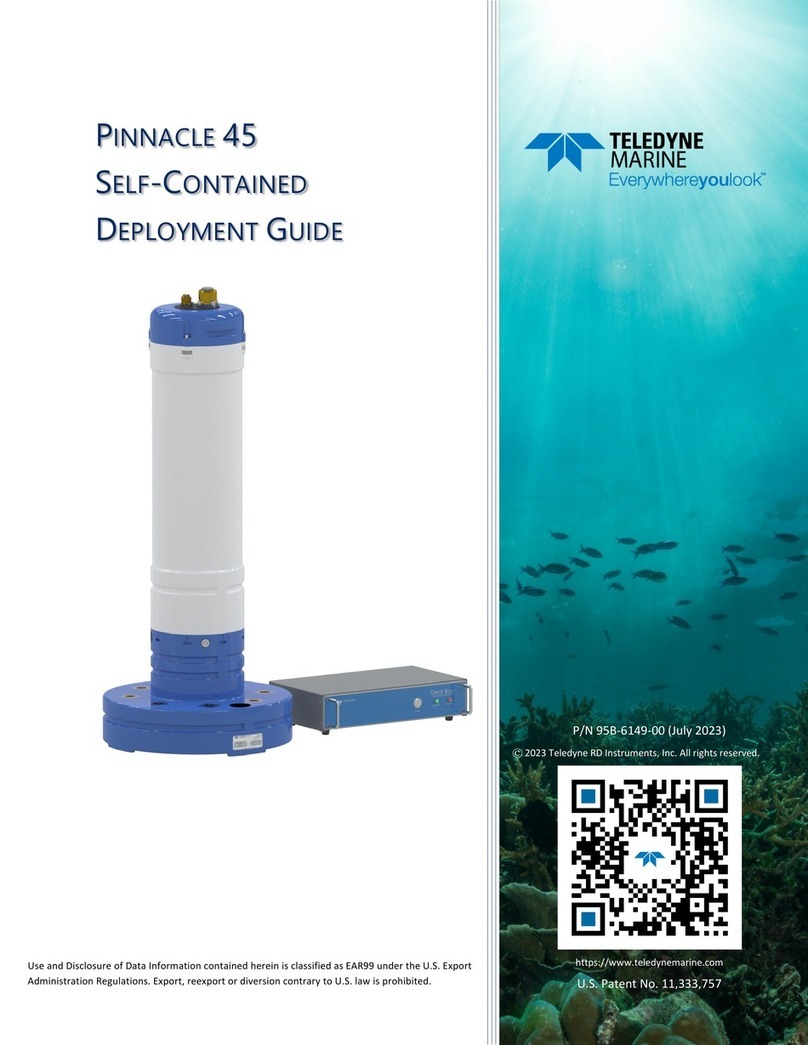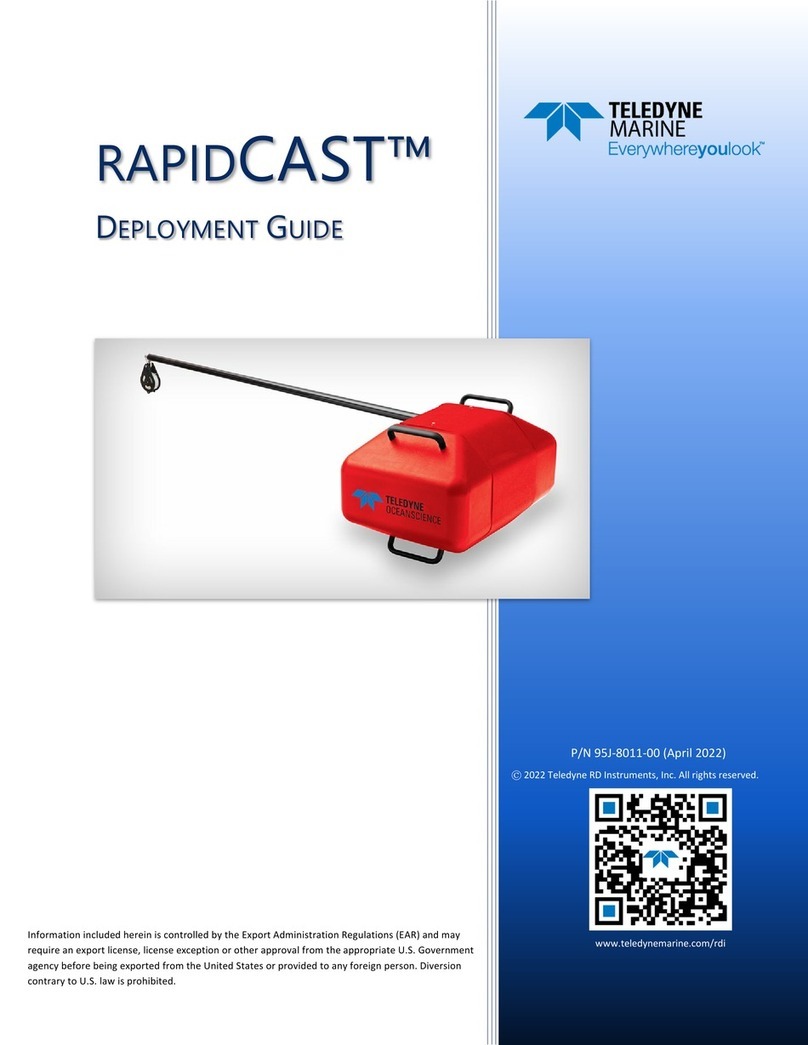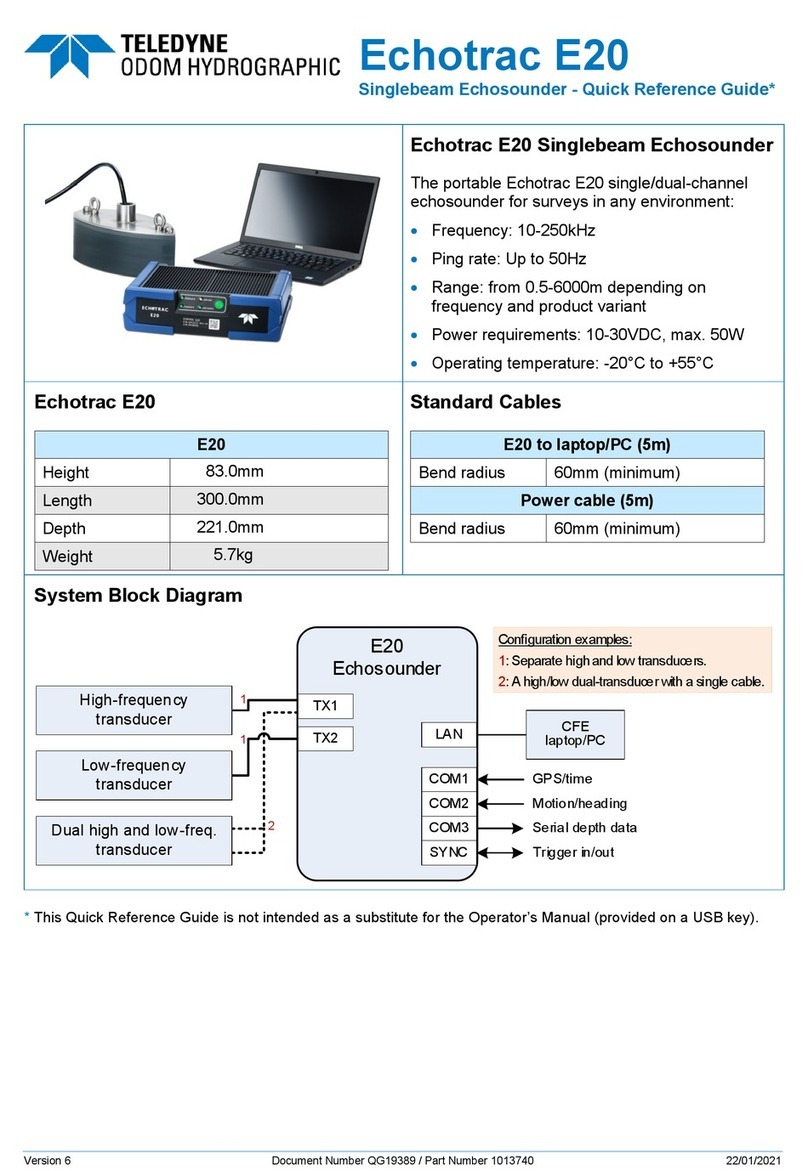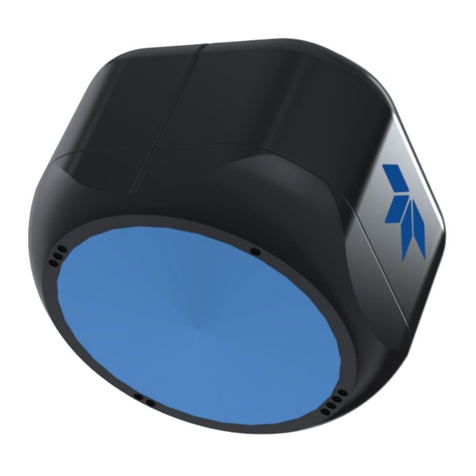
StreamPro Deployment Guide P/N 95B-6129-00 (August 2021)
EAR-Controlled Technology Subject to Restrictions Contained on the Cover Page. Page 1
Preparing the StreamPro
PREPARING THE STREAMPRO INCLUDES THE FOLLOWING STEPS:
Checking you have all the StreamPro parts
Installing the documentation and software CDs
Assembling the float
Identifying what’s in the Box
Included with the StreamPro system:
Part Number Name Description
SPADCP-I StreamPro system The StreamPro system includes the transducer and electronics housing. When
unpacking, use care to prevent physical damage to the transducer and connector.
Use a soft pad to protect the transducer.
Included with the StreamPro Accessories Kit (SPADCP-A):
Part Number Name Description
1650 Shipping case Shipping case with custom foam cutouts.
SPFLOAT StreamPro Float Tri-hull float and arm assembly for tethered deployments. Various GPS mounts
and kits are available. For more information on GPS mounting kits, see Appendix
B in the StreamPro ADCP Guide.
75BK6007-00 Solar Shield Protects the electronics housing from the sun/overheating.
PC1500 AA batteries 16 AA batteries
90Z-8001-00 Water Resources CD This CD has PDF versions of all the StreamPro documentation including the
StreamPro ADCP Guide. Please read the manual!
WinRiver II Software TRDI’s river and coastal data acquisition software package where the primary use
is for discharge calculation. Although this is its primary function, it can be used
for general coastal survey applications.
TRDI Toolz Software Utility and testing software package that can be used to test the StreamPro.
SxS Pro Software
(optional)
Section-by-Section (SxS) Pro is a stationary ADCP discharge data collection and
processing program. This CD will be included with the SxS Pro upgrade
(registration code is required to collect data).
Q-View Software (optional) Q-View is designed for customers using WinRiver II software to have easy access
to an evaluation of the quality of collected data while they are still in the field
and back in the office (registration code is required).
75BK6057-00 Windows Tablet (optional) Optional Windows tablet and tablet setup card.
95B-6128-00 StreamPro Getting Started A printed reference card showing how to get started with the StreamPro. A PDF
version is included on the StreamPro documentation CD.
95B-6129-00 StreamPro Deployment Guide A Printed guide showing the steps needs for a successful deployment.
957-6277-00 SD1000U Bluetooth
Communications Setup Card
A printed quick reference card showing Bluetooth communications setup using
the SD1000U. A PDF version is included on the WinRiver II CD.
